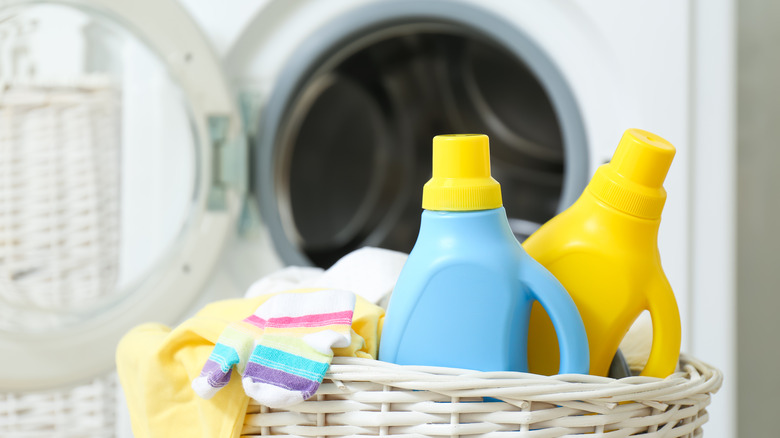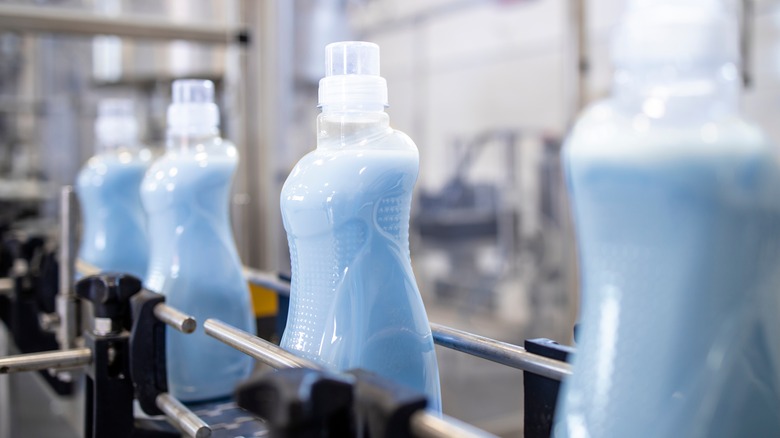The Fabric Softener Hack That Will Keep Your Windows Dust-Free
Windows, like every other object and surface inside your home, grow dusty and dirty over time. Homeowners should clean their windows inside and out at least twice every year. Though, if you live in an area subject to large concentrations of pollen or pollution, you may need to clean them more frequently. While you can always use traditional glass cleaner to keep your windows sparkling, fabric softener is another household product you can use to boost your window-cleaning process to new heights!
Designed to make your clothes, towels, and sheets soft and cozy, the substance can also double as a dust repellant, helping you keep your window panes clean for extended periods. This cleaning hack, first seen in a Facebook group, per Metro, has inspired others to find creative uses for fabric softener when working around the house. Let's break down why fabric softener works on windows and learn the most effective way to incorporate it into your cleaning routine.
How to use fabric softener on your windows
For the best results, Metro says to add ¾ of a cup of warm water to a capful of fabric softener and adjust the mixture until you end up with your preferred consistency. Use a microfiber cloth or an electrostatic cloth on your glass surfaces since other fabrics can leave behind a trail of residue that can make windows appear even dirtier than before. To keep your windows from feeling slick or wet afterward, go back over the glass with a dry cloth. Sponges, paper towels, and newspapers are some glass-friendly alternatives you can use to wipe down windows.
While fabric softener can also help clean your windows, the substance mainly adds a protective, dust-resistant layer atop glass surfaces, says Metro, keeping them dust-free for longer periods. Lil' Green Wagon advises against relying solely upon fabric softener when cleaning windows because the product can cause streaks to appear in the glass. When used too liberally, fabric softener can also cause a thick film to develop on your window panes, interfering with the shine and making them more difficult to see through, says Windex.
Why fabric softener?
Fabric softener and dryer sheets contain anti-clinging properties, says Kiwi Services. This is why adding fabric softener to your clothes in the wash removes wrinkles and keeps the items in your laundry from sticking to one another. Applying the product to your windows can reduce dust accumulation atop the glass, buying you more time between cleans. You don't have to restrict fabric softener usage to windows alone. Kiwi Services recommends using the product on your baseboards to decrease dust buildup.
According to Hella Property, a fabric softener can also break down deep, set-in stains, like grease or hardened water. Mix the product with warm water and spray it onto stained surfaces around your home, then clean the leftover residue with a sponge. When cleaning burnt grease or gristle left within a frying pan, leave the mixture to soak inside the pan overnight and rinse the stains off the next day. Hella Property states that homeowners shouldn't fret about using the fabric softener concoction in various capacities since the product doesn't contain any chemicals too harsh for regular human contact. Fabric softener even leaves a pleasant aroma, as opposed to the intense, often hazardous scent of traditional household cleaners.


